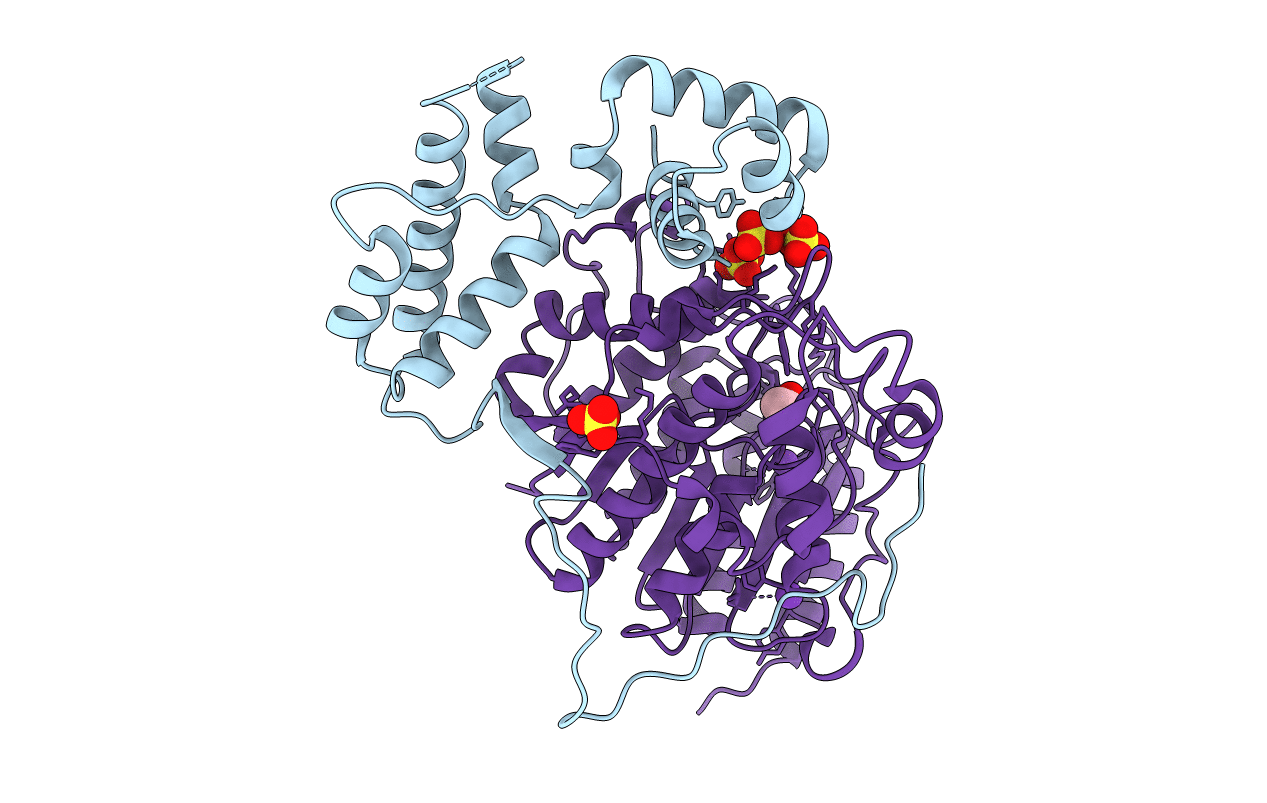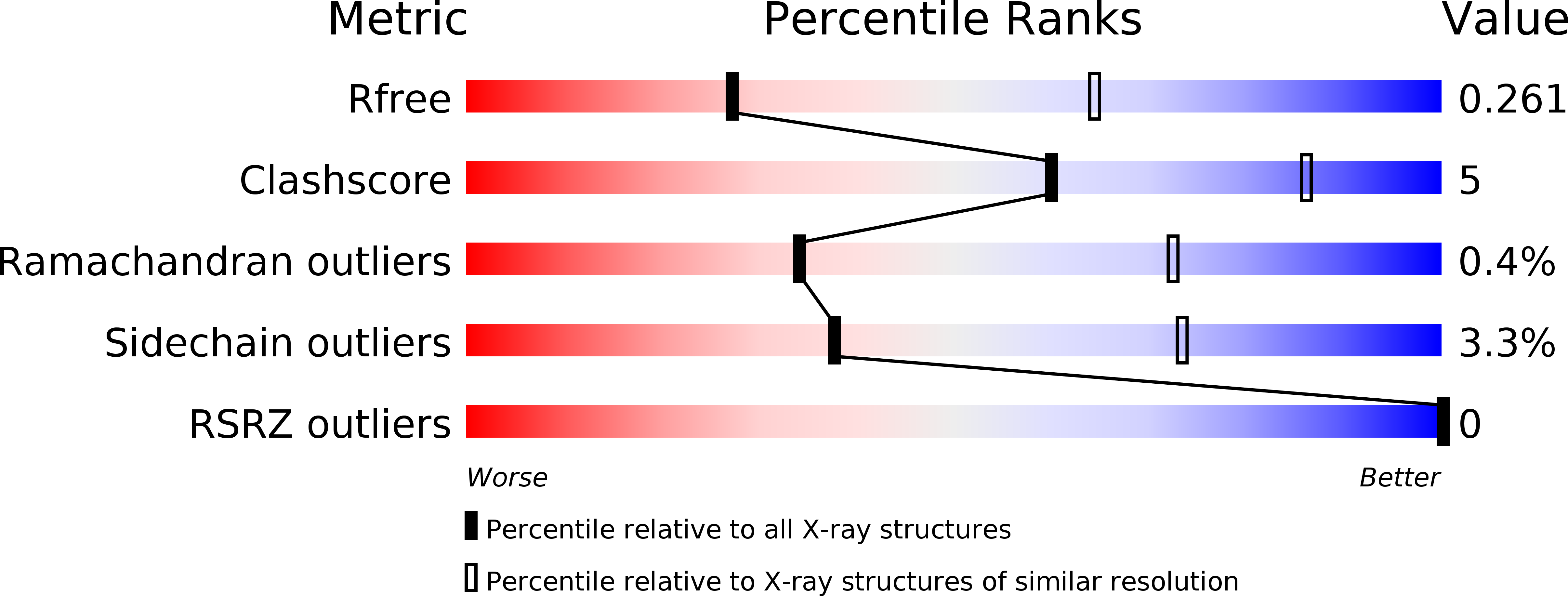
Deposition Date
2013-04-30
Release Date
2013-07-03
Last Version Date
2023-12-20
Entry Detail
PDB ID:
4BKX
Keywords:
Title:
The structure of HDAC1 in complex with the dimeric ELM2-SANT domain of MTA1 from the NuRD complex
Biological Source:
Source Organism:
HOMO SAPIENS (Taxon ID: 9606)
Host Organism:
Method Details:
Experimental Method:
Resolution:
3.00 Å
R-Value Free:
0.26
R-Value Work:
0.21
R-Value Observed:
0.21
Space Group:
P 32 2 1


